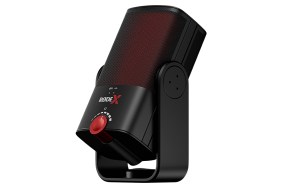The other blue man group.
A short year and a half after releasing the solid Mega Man Anniversary Collection, Capcom wisely heeds the call of its fans for the re-release of the blue bomber’s older, tougher, future self in Mega Man X Collection. Bringing another heaping portion of the finest 2D platforming around in six yummy courses, it even throws in a racing game and some extra goodies for dessert.
The X series debuted in the early 90’s on the SNES with a darker, more mature feel designed to expand on the tried and true formula of the original NES titles. The main difference lies in the progressive, overarching plot dealing with human/reploid (fancy word for robot) conflict and some very grown-up ideas about this self-proclaimed ‘race’ of androids seeking freedom and realizing their dream of a robotopia. That’s pretty intense for a side-scroller.
[image1]As far as gameplay evolution, the X games focus on collecting various ability upgrades and health extensions in addition to the old “kill the bosses and get their special powers” mechanic of the classic Mega Man. New actions like charge shots, dashing and hovering add a deeper set of variables to the equation and really flesh out the experience. Gone are Cut-Man and Dust-Man, as the baddies in X get wacky animal-based monikers like Spark Mandrill, Morph Moth and my personal favorite, Duff McWhalen.
Mega Man X through X6 are included in this fairly robust package, covering three SNES and three PSOne titles released over an eight-year period, and each game adds variation and depth to the experience. X3 introduces the mysterious, androgynous, light-sabering Zero as a partially playable character (think Proto-Man with a ponytail), and X4 tops that by giving Zero his own playable storyline. Things start to take a turn for the worse in X5 and X6, however, where the heavy plotlines and vast amount of upgrades start to buckle under their own weight. Ultimately, the bells and whistles of the PS titles hasten the slow decline from the series’ original greatness by adding a bit too much drama and cheesy gameplay tactics.
All the games share the same sweet, distinctive art style of cartoonish robo-animals and colorful, interactive levels. The emulation is rock solid, and unlike the Mega Man Anniversary Collection, you can now configure your controller however you see fit. There’s no noticeable difference between the PS2 and Gamecube versions, although the PS2’s controller is better suited for hours upon hours of holding that charge shot while trying to dash-jump off walls.
[image2]Barring a strange audio loop plaguing the SNES games, the sound is spot-on, too. Nice, catchy tunes carry you through the whole shebang. The sound effects are faithful as well, although the PS titles tie annoying ‘Yeah!’ and ‘Hah!’ sound effects to every jump and attack, and I guarantee your ears will ring with the sound of a held charge shot after a few hours.
Password support is still in working order for X, X2 and X3, so feel free to skip to the end, but you’re also able to simply save your progress to a memory card like the PS games. The incentive to bust through the first three titles lies in the fact that once completed, you’ll unlock Mega Man Battle and Chase, which is a Mario Kart-esque racer that was only released in Japan. It’s nice to see such a rarity, but why they buried it beneath three other games is mystifying. As you plow through the other games, you’ll also unlock various art galleries and soundtracks to fawn over, if you’re the type.
And it’s hard not to be at this price – thirty bucks for seven games ain’t too shabby, even if a few of them aren’t terrific. While the Mega Man Anniversary Collection contained more meat, there’s simply a ton of robots to blast, dozens of armor capsules to grab, and really no good reason not to let ol’ Blue back in your life once again.
-
Seven games
-
Great emulation
-
X5 ain't so hot
-
X6 is worse
-
Could use more interesting extras











